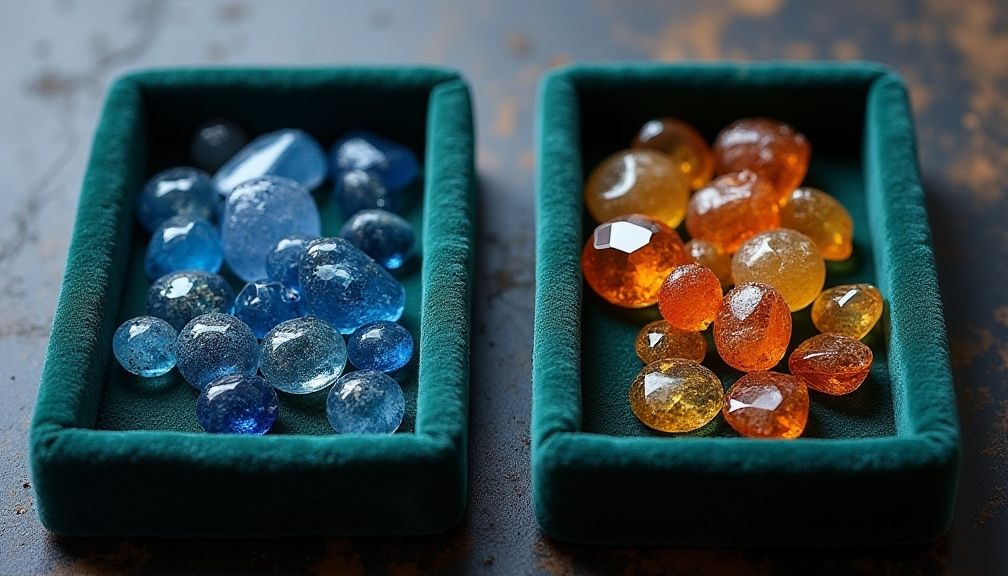When it comes to gemstones, beauty often captures our attention first. It’s natural to be drawn to the dazzling colors and sparkling brilliance of these natural wonders. However, beneath this appealing exterior lies a much more complex world of gemstone treatments that influence not only the prices of gems but also their quality, durability, and environmental impact. Understanding gemstone treatments is crucial for anyone interested in buying jewelry, whether for personal use or investment purposes.
The Importance of Gemstone Treatments
Gemstones are often subjected to various treatments to enhance their appearance. This process can include anything from dyeing and heating to more complex procedures like fracture filling or laser drilling. These treatments can significantly alter the gemstone’s color, clarity, and overall value. By knowing about these treatments, consumers can make more informed choices and avoid potential pitfalls in their gemstone purchases.
For instance, a natural ruby is a rare and highly valued gemstone. However, if that ruby has been treated through heating or dyeing, its value may not be the same. As a consumer, being aware of these factors can prevent you from overpaying for a treated gemstone.

Common Gemstone Treatments Explained
Here’s a closer look at some of the most common methods used to treat gemstones.
1. Heat Treatment
Heat treatment is one of the most widely used methods for enhancing the color and clarity of gemstones. This process involves subjecting stones like sapphires and rubies to high temperatures, which can remove impurities and enhance their natural hues. While heat treatment is generally accepted in the gemstone industry, it’s essential to disclose when it has been done. Not only does it affect the gem’s price, but it also plays a role in how the gem is marketed.
2. Dyeing
Dyeing is another common treatment that involves introducing colorants to improve or change the color of a gemstone. This is often done with lighter-colored stones, such as agates or jadeites. While dyeing can create stunning visual effects, it can also mislead consumers if not properly disclosed. A dyed stone may appear vibrant and beautiful, but it might not have the same intrinsic value as a naturally colored gemstone.
3. Fracture Filling
Some gemstones, particularly diamonds, may contain visible fractures that can detract from their appearance and value. Fracture filling involves injecting a resin-like substance into these cracks to make them less visible. While this treatment makes the gem look clearer, it can affect durability and should always be disclosed when sold.
4. Laser Drilling
Laser drilling is often used on diamonds to improve clarity by removing inclusions. A laser creates a tiny hole to reach the inclusion, allowing for its removal. This treatment can enhance a diamond’s visual appeal, but just like others, it should be disclosed to buyers.
Identifying Treated Gemstones
Identifying whether a gemstone has undergone treatment can be challenging and often requires professional help. For the average consumer, here are a few tips to help you navigate the market:
1. Ask Questions
When purchasing a gemstone, always ask whether it has been treated. Reputable dealers will willingly provide this information and discuss the specific treatments applied to the gemstone. Don’t hesitate to inquire about certifications that validate the gem’s status as untreated or treated.
2. Look for Certifications
Institutions like the Gemological Institute of America (GIA) or the American Gem Trade Association (AGTA) can provide certification reports highlighting any treatments a gemstone may have experienced. A certificate adds credibility to the purchasing process.
Further Reading:
3. Conduct a Visual Inspection
To a trained eye, certain visual cues can indicate treatment. For example, a gemstone with unnatural color zoning might be dyed, while a diamond with noticeable internal fractures may have been subject to fracture filling. However, visual inspections alone are not sufficient without expert training.
The Market Impact of Gemstone Treatments
Understanding gemstone treatments also has broader implications on market prices and consumer attitudes. As consumers become more educated about treatments, the demand for untreated stones has surged. This shift has led to increased values for natural, untreated gemstones, which have become highly sought after.
Conversely, there has been a growing skepticism surrounding treated stones, particularly for those unaware of the treatments involved. This skepticism can affect sales and create an imbalance in market dynamics. Educated consumers tend to prefer transparency, valuing ethics in gemstone sourcing and treatment processes.
Environmental Considerations
Many gemstone treatments have environmental implications. For example, dyeing and fracture filling often involve chemicals that can be harmful to the environment. Additionally, the mining of untreated gemstones itself can be environmentally devastating, leading to deforestation, habitat loss, and water pollution.
By choosing untreated gemstones or those treated through environmentally friendly methods, consumers can contribute to more sustainable practices in the gemstone industry. Supporting ethical sourcing and treatments can help drive the jewelry market toward more responsible practices.

Consumer Empowerment
Knowledge is power when it comes to purchasing gemstones. By educating yourself about treatment processes, you become a more empowered consumer. This knowledge allows you to make better purchasing decisions, ensuring that you invest in gemstones that truly resonate with your values and aesthetic preferences.
In today’s age of information, consumers are encouraged to carry out their own research. Whether you examine industry standards or consult with gemstone professionals, every effort in educating yourself contributes to a healthier market.
Conclusion
Gemstone treatments may seem like a minor detail initially, but they hold significant implications for beauty, value, authenticity, and sustainability. As you explore the mesmerizing world of gemstones, remember that knowledge is key. The more you understand gemstone treatments, the better equipped you are to make informed decisions. Whether you’re a seasoned jewelry aficionado or just starting your collection, recognizing and understanding gemstone treatments is essential. It allows you to appreciate not just the beauty but also the integrity of your precious gems. In an age where consumers crave transparency and authenticity, being aware of treatments helps you navigate the gemstone market with confidence.








